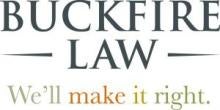Flammable clothing lawyers help people who suffer burn injuries from garments and costumes that catch on fire. Typically, the burn injury victims are children and infants, often having catastrophic burns while wearing defective clothing. Manufacturers of dangerous consumer products can be sued if the product causes injury or death. The distributor and seller of the goods can also be sued in some cases.
The definition of flammable is “capable of being easily ignited or set on fire.” Many things in our daily live our flammable like paper and gasoline or household products like cooking oils and hand sanitizers. However, certain products must be designed with set standards to prevent them from catching on fire and from easily allowing the spread of fire. This includes clothing and garments.
The United States sets specific standards that require clothing items to be non-flammable or difficult to ignite. This is done to reduce the risk of burn injuries to the public, especially children and infants. Articles of clothing made outside the US must still comply with strict clothing flammability standards in order to be sold to the public in the US.
The Flammable Fabric Act of 1953 categorized fabrics into three classes. Class 1 is normal flammability, which are textiles or fabrics that meet all of the requirements of the FFA and can be used to make articles of clothing. Class 2 is intermediate flammability. This class is textiles and fabrics that contain raised-fiber surfaces, but they still may be used if they meet all safety standards required under the FFA. The third class is rapid and intense burning, which are fabrics or textiles that cannot be used for clothing as they are highly flammable and extremely dangerous.
Any piece of clothing can catch on fire in certain circumstances, but some types ignite faster than others. For example, natural fibers like cotton and silk ignite faster than wool. Common types of flammable clothing are baby clothes, linens and blankets, pajamas and nightwear, boxer shorts, silk shirts and pants, loose-fitting clothes of all types, and Halloween costumes. Clothing can ignite quickly and will typically catch fire from a candle, oven, or even outdoor barbeque. They start without warning and spread before people in the vicinity can act to put the fire out.
After a clothing fire, seek medical treatment right away. For less serious burns, go to local urgent care or your primary care doctor, but for more serious burns, it is best to be treated at a hospital burn injury unit.
If someone suffers a serious burn injury because of a flammable clothing article, there may be a basis to file a flammable clothing lawsuit. They seek to demand compensation for the physical and psychological damages endured by the victim.
If you want to file a lawsuit, save the piece of clothing that caught on fire to allow lawyers to test the article and its compliance with flammability standards. Additionally, take photos of the clothing article and injuries as soon as possible after the fire. Lastly, try to find the sales receipt or credit card statement for the article of clothing to help establish a point of sale and hold the proper parties accountable.
In order to win a clothing burn lawsuit, the case must prove the following criteria: the clothing was flammable and in violation of the FFA, the clothing that caught on fire was the proximate cause of the burn injuries, the clothing manufacturer/distributor knowingly or negligently placed dangerous and defective clothing products for the sale to the public, and the flammable properties of the clothing were present at the time of purchase. Additionally, it is important that the clothing and fabrics were not provided with warning labels or have warning labels that understate potential risk.
The three likely defendants in a flammable clothing burn injury lawsuit are a clothing store that sells the article of clothing, the company that designed, manufactured, and sold the flammable clothing item, or a distributor that sold the flammable clothing article to retailers.
There is no set guideline for compensation from clothing burns. It varies in each case and is assessed by economic and non-economic losses. Economic losses are financial harm from the injury, commonly including lost wages, medical expenses, and loss of future income. Medical expenses can include future treatment. Non-economic damages are non-financial losses that include physical pain and suffering, mental anguish, disfigurement, and disability.
Jury verdicts will have specific dollar amounts for categories of both economic and non-economic losses. Settlement negotiations will discuss all losses but commonly have a lump sum payment including all potential recoverable damages. Some states may also have punitive damages that punish the defendant for manufacturing and selling dangerous clothing articles.
If you or someone you care about suffered burn injuries due to flammable clothing or fabric, it is important to contact an experienced attorney to see if you meet the criteria to file a lawsuit.




 />i
/>i

